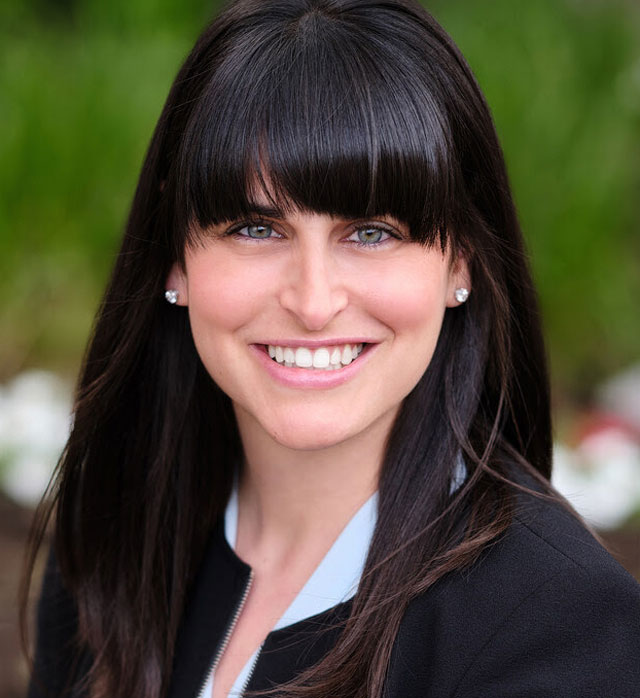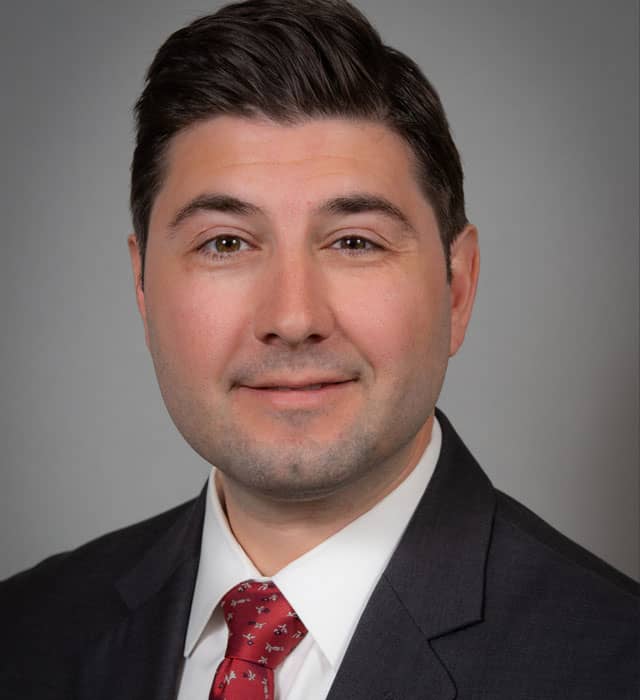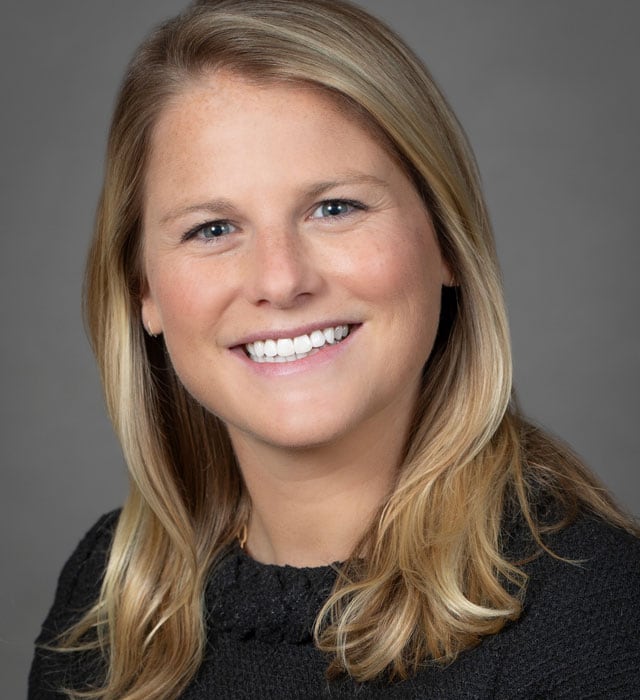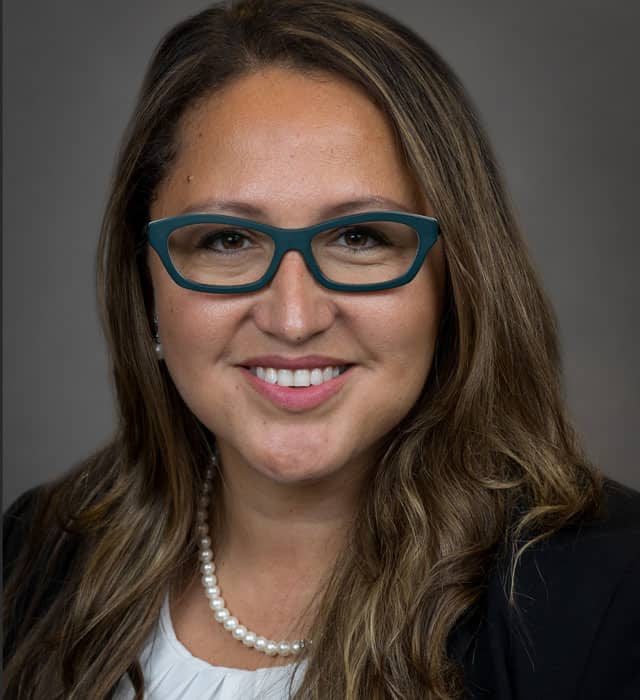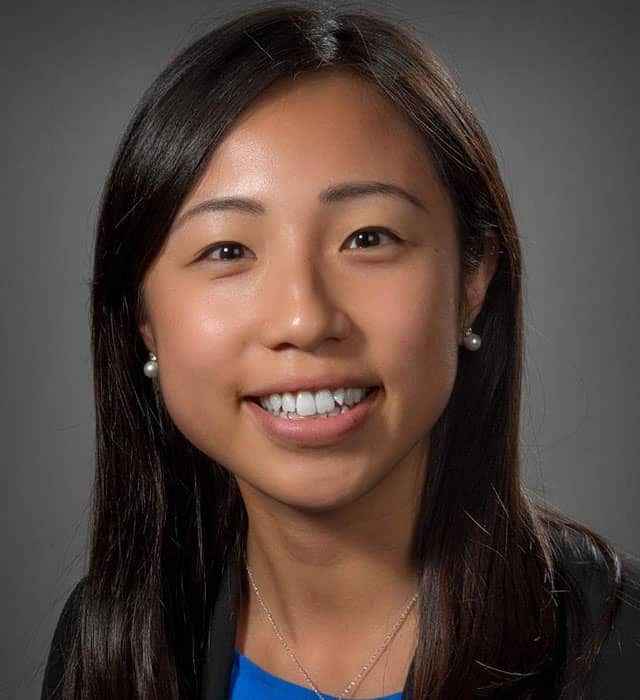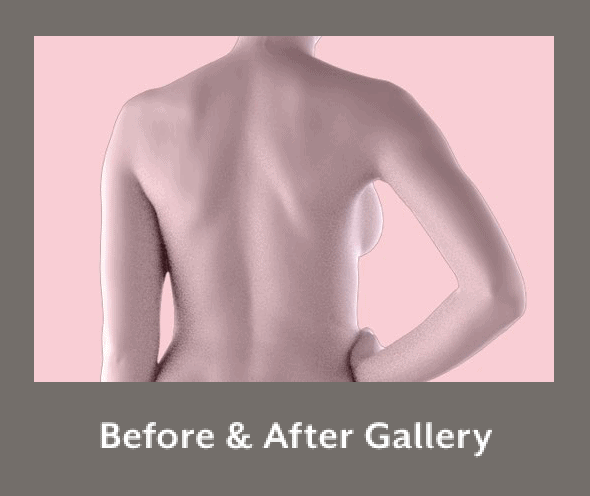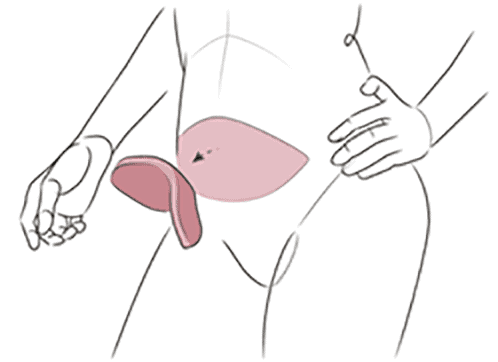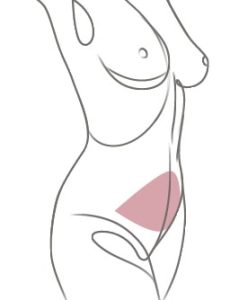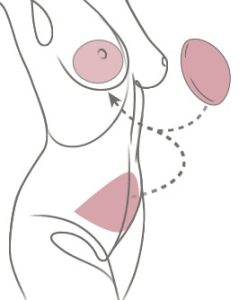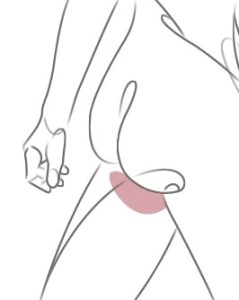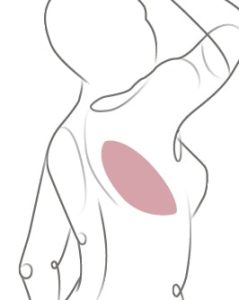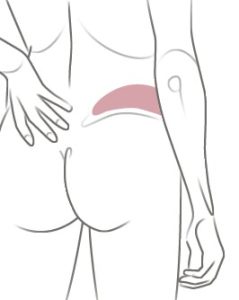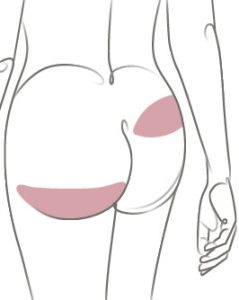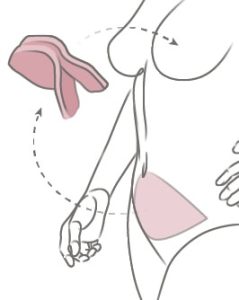About Breast Reconstruction » Natural Tissue (Flap) Reconstruction » Alternative Tissue Sites » Stacked Flap Procedure
Stacked (Double) Flap Procedure
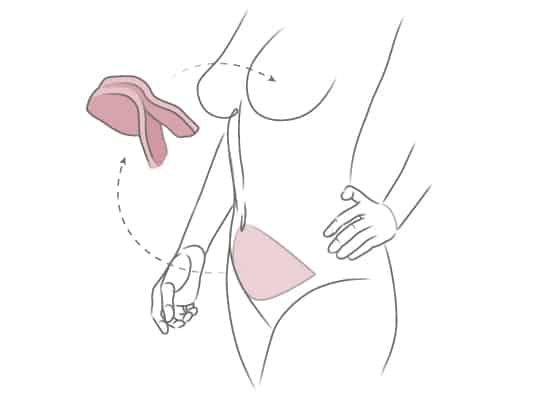
On this page

On this page
Some women don’t have enough fatty tissue for standard natural tissue breast reconstruction procedures, which usually use single tissue flaps from the abdomen or other donor sites to replace each breast’s volume. Implant-based reconstruction is an alternative, but for women who prefer to avoid implants, the stacked flap technique may be a better option.
In a stacked flap procedure, two flaps are stacked one on top of the other to create a breast of sufficient size. Two flaps from one site, such as the abdomen or thigh, can be used to make a new breast, or flaps from different donor sites can be combined to restore the volume. This technique is more complicated because additional vessel connections have to be performed to provide blood supply to each piece of tissue that is transferred.
Procedure
Unilateral stacked DIEP flap
In the stacked DIEP, as in the standard DIEP, a tissue flap containing skin and fat is surgically removed from the lower abdomen. Only one incision is made, so scarring is minimized. The flap is carefully separated from the abdominal muscle and its two halves connected to each other. The resulting stacked flap is then transferred to the chest, blood vessels from each flap are reconnected to blood vessels in the chest, and the new breast is sculpted.
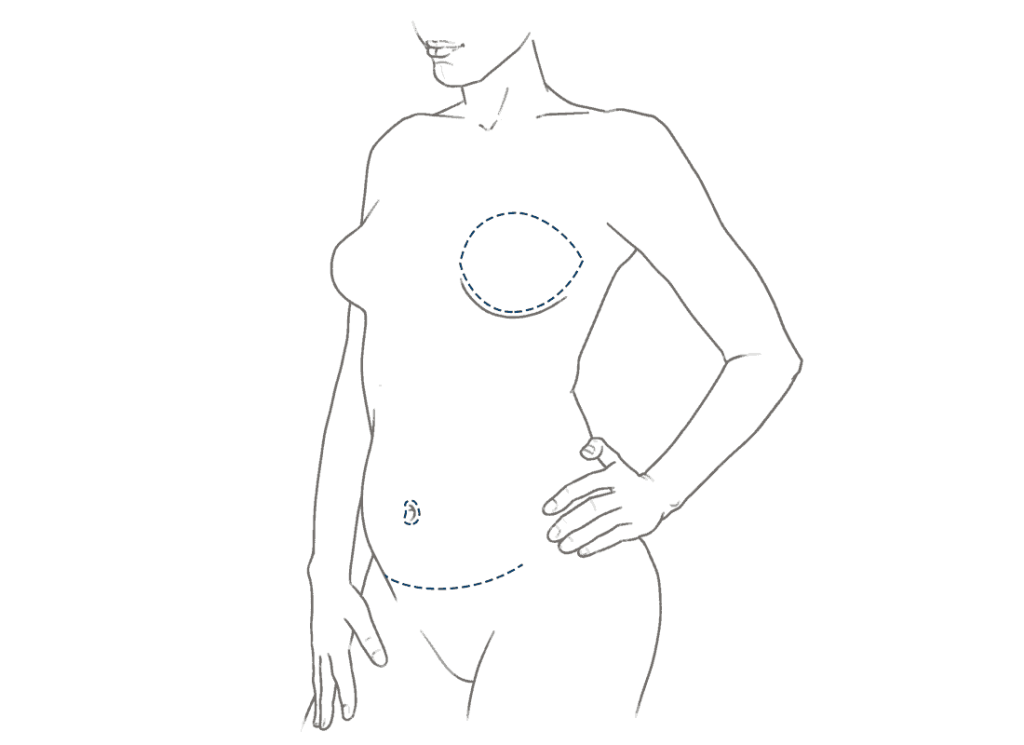
Unilateral stacked PAP flap
The stacked PAP flap procedure uses the upper inner thigh and back of the thigh to create the new breast. No muscle is taken from the thigh. In the stacked PAP, one flap of tissue and fat is taken from each of the upper thighs and then stacked together to create the new breast. The stacked flap is surgically attached to the chest, using microsurgery to join the blood vessels in the flap to corresponding vessels in the chest, and the new breast is formed.
Because a pedicled flap remains attached to the donor site, its blood vessels aren’t cut and the tissue keeps its original blood supply. Because no microsurgery is needed, the pedicled-flap TRAM is a quicker and easier procedure than the free-flap TRAM. However, the blood supply is often weaker in the pedicled-flap TRAM, which limits the amount of tissue that can be transferred.
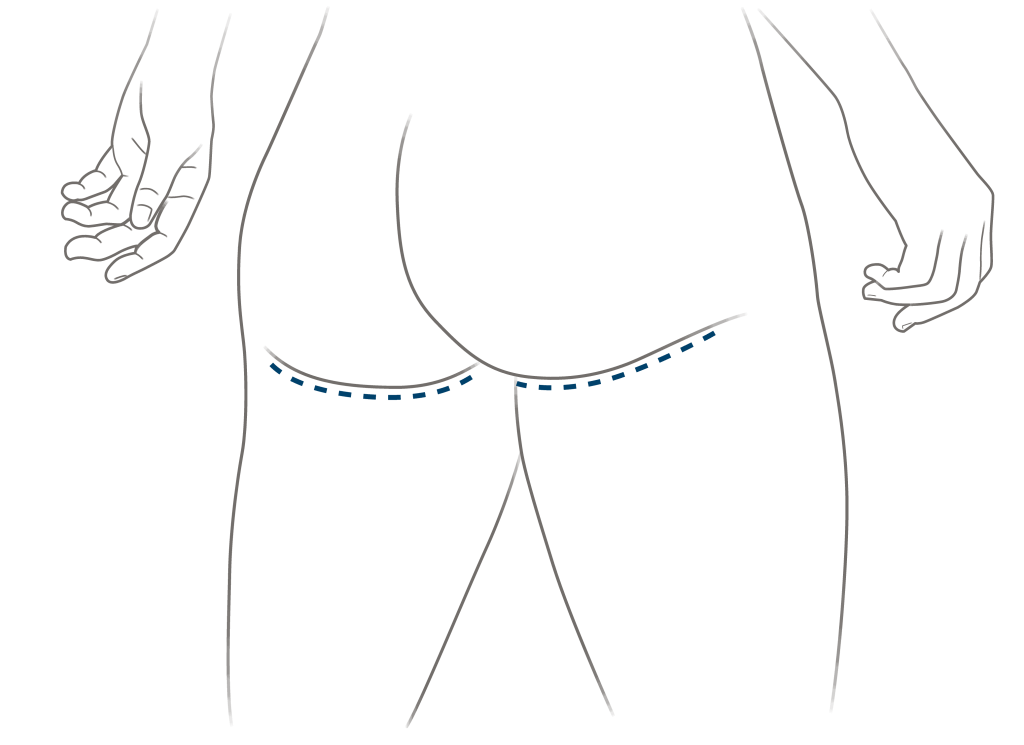
Bilateral stacked flaps
When bilateral stacked flaps are performed, flaps from two different donor sites are combined, such as a DIEP flap and a PAP flap, to reconstruct each breast.
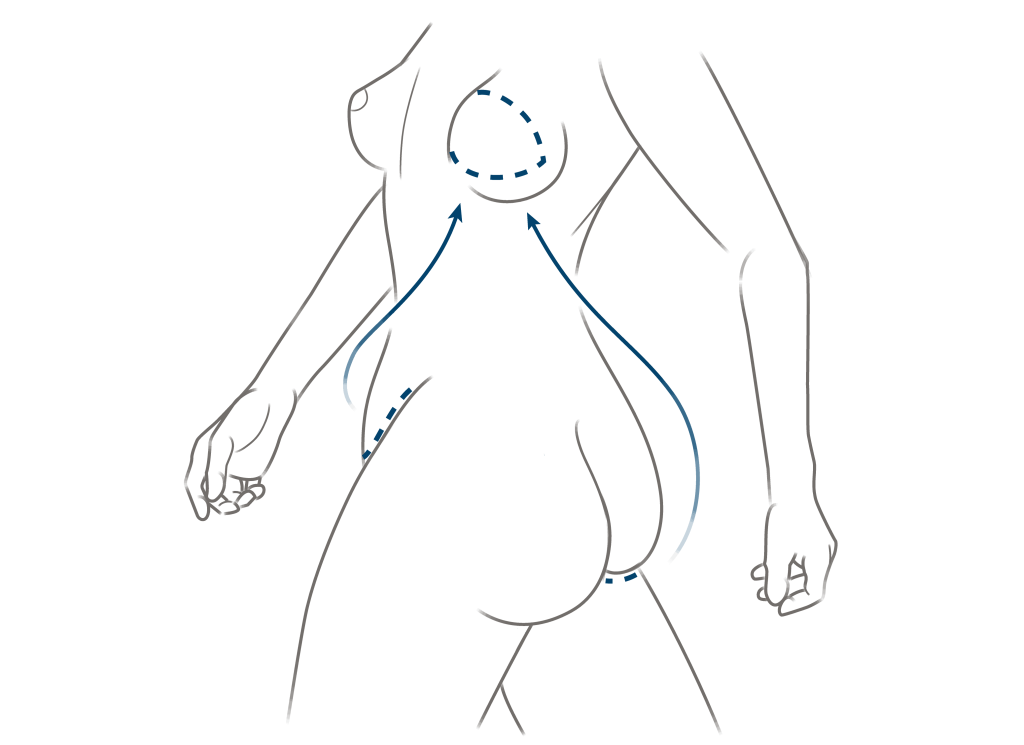
Your Recovery
Recovery Time
The usual hospital stay for a stacked flap procedure is 1-3 days.
If you had a stacked DIEP flap procedure, you’ll be able to return to most activities after 6-8 weeks, but no heavy lifting may be done for 6-12 weeks after surgery. If you had a stacked PAP flap procedure, you’ll be able to return to most activities after 6-8 weeks.
It can take up a year for your tissue to completely heal.
Expect to Feel
Expect soreness, swelling, and bruising at all surgery sites. You might experience some loss of sensation, which is often temporary at the donor tissue site.
Scarring
For a stacked DIEP flap procedure, the abdominal incision runs horizontally from hip bone to hip bone across the lower abdomen, about a third of the way between the top of your pubic hair and your belly button. The scar may be higher than a tummy tuck (abdominoplasty) scar, but it often sits under the bikini line.
For a stacked PAP flap procedure, the thigh incision runs along the groin just below the crease of the lower buttock.
Scars typically fade over 12-18 months. Your breast scars will largely depend on the type of mastectomy you end up having type of mastectomy you end up having.
Additional Procedures
All types of natural tissue breast reconstruction usually require one (or more) additional procedures, sometimes known as revisions or “stage II”, to complete the reconstruction process and obtain the best cosmetic result.
Contraindications and Alternatives
You may not be a candidate for stacked flap if you don’t have enough healthy tissue at multiple donor sites or if you want reconstructed breasts that are larger than the tissue you have available.
While stacked flap is most common from the abdominal or thigh tissue sites, you may also have tissue taken from the buttocks, upper back, or lumber (lower back) region. Another alternative is hybrid reconstruction, which combines natural tissue reconstruction with a small implant.











